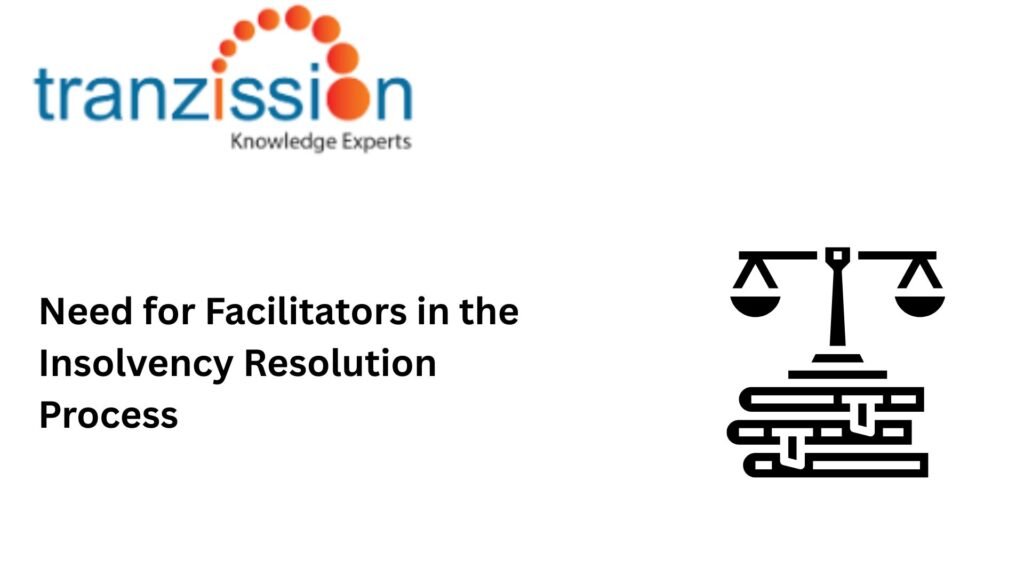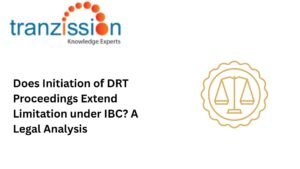
Need for Facilitators in the Insolvency Resolution Process

Table of Contents
The Insolvency and Bankruptcy Board of India (IBBI) notified the Insolvency and Bankruptcy Board of India (Insolvency Resolution Process for Corporate Persons) Regulations, 2016 (CIRP Regulations) through the Insolvency and Bankruptcy Board of India (Insolvency Resolution Process for Corporate Persons) (Amendment) Regulations, 2025. This amendment aims to provide a more balanced approach to resolving insolvency cases involving real estate companies, ensuring that the interests of allottees are adequately safeguarded while promoting a fair and efficient Facilitators in the Insolvency. This article delves into the roles and responsibilities of facilitators and the legal framework governing their functions.
Understanding the Role of Facilitators in the Insolvency Resolution
Who are the facilitators of the insolvency process?
Facilitators are professionals or entities that assist Resolution Professionals (RPs) in handling insolvency resolution’s operational, legal, and financial aspects. They streamline communication between stakeholders and ensure compliance with the Insolvency and Bankruptcy Board of India (IBBI) regulations.
How Facilitators Differ from Resolution Professionals:
RPs are appointed to conduct the corporate insolvency resolution process (CIRP) and oversee the entire process, whereas facilitators are appointed by the Committee of Creditors (CoC), support the RP by assisting with communication and information gathering for creditors and include legal experts, financial advisors, and compliance specialists.
Key Responsibilities of Facilitators in CIRP & Liquidation
The roles and responsibilities of the facilitator are listed under Regulation 16D of the IBBI (Insolvency Resolution Process for Corporate Persons) Regulations, 2016 (hereon forward known as “the CIRP Regulations”):
Assisting in the Preparation & Submission of Resolution Plans:
Facilitators in the Insolvency help resolution applicants structure resolution plans in compliance with IBC regulations and ensure financial viability and legal adherence to the plan documentation.
Coordinating Between Creditors, Debtors & Regulatory Authorities:
They act as intermediaries, ensuring smooth communication between all stakeholders and assisting in organizing CoC meetings and document filings.
Ensuring Compliance with IBBI Regulations & NCLT Guidelines:
Although not explicitly mentioned under this Regulation, as per clause (d), facilitators must complete any other tasks assigned by the committee to improve representation and communication. This involves tracking regulatory updates and ensuring insolvency professionals follow the latest compliance norms.
Supporting Financial & Asset Valuation Processes:
Facilitators assist in independent asset valuation to ensure fair pricing in insolvency resolutions and work closely with valuation professionals to improve creditor recovery rates.
Legal Framework Governing Facilitators in Insolvency Resolution
The CIRP Regulations allow for the appointment of facilitators within large creditor classes in Facilitators in the Insolvency resolution processes, specifically for sub-classes like homebuyers, to improve communication and participation. Through the 2025 amendment, the IBBI has introduced new norms regarding the appointment and role of facilitators in insolvency proceedings. These facilitators, also known as sub-class representatives, are appointed to facilitate communication and representation for specific creditor groups. Courts have also upheld the role of facilitators in ensuring unbiased resolution planning, and facilitators must operate within the legal scope defined under the IBC.
Challenges in Implementing Facilitator Roles in Insolvency Cases
Risk of Conflict of Interest in Resolution Plan Facilitation:
Facilitators must remain independent to avoid bias in decision-making during the resolution process, which may not always be in practice. To address this it is necessary to establish strict oversight by the IBBI and mandatory disclosure of facilitator roles.
Lack of Standardized Roles & Responsibilities:
The IBC and CIRP Regulations do not define the roles of the facilitators. Therefore, there is a need for a structured regulatory framework with more detailed provisions on their responsibilities.
Potential Legal & Compliance Risks:
The misinterpretation of facilitator responsibilities can often lead to regulatory penalties. The IBBI, thus, requires training and certification programs for insolvency facilitators.
The Future of Facilitators in Insolvency Resolution Under IBC
The current insolvency framework does not have detailed provisions for its functions. The IBBI needs to establish clear guidelines for facilitator engagement, defining their scope of work and ensuring transparency in their roles. Further, defining legal responsibilities will prevent misuse of facilitator services. Regular audits and regulatory checks by the IBBI strengthen their oversight of facilitators, effectively preventing any conflicts of interest and delays in the resolution process. Artificial intelligence (AI) and automation may be used to track resolution progress and compliance deadlines. To address any gaps in the current system, India can adapt certain concepts from the United States and the United Kingdom models to improve facilitator integration.
Conclusion
Facilitators in the Insolvency essentially ensure clear and efficient communication throughout the insolvency process. They collect, collate, and present relevant information to the CoC, enabling them to make informed decisions. Through the Amendment Regulations of 2025, the IBBI allows for the appointment of additional facilitators in real estate insolvency to support communication between creditors and the CoC. These facilitators will act as intermediaries between authorized representatives and creditors, ensuring seamless communication and clarity regarding insolvency proceedings. This measure will build confidence amongst homebuyers and stakeholders in the process and encourage homebuyer participation.
Read more :





